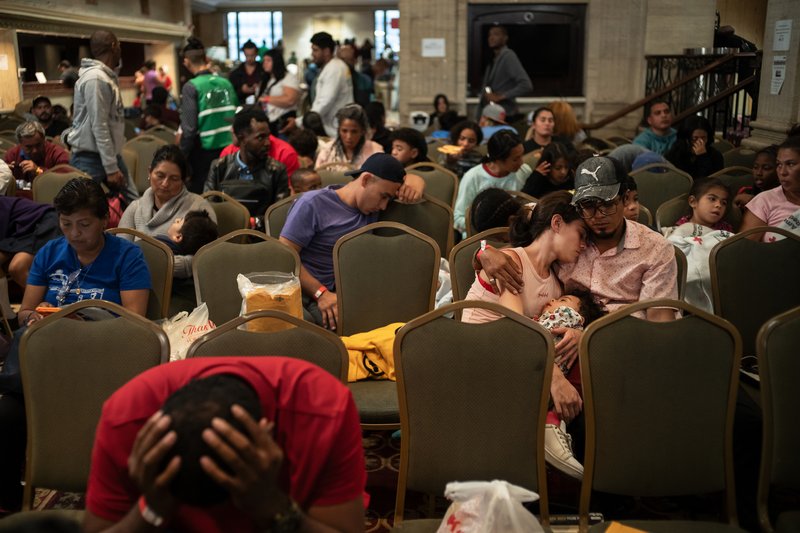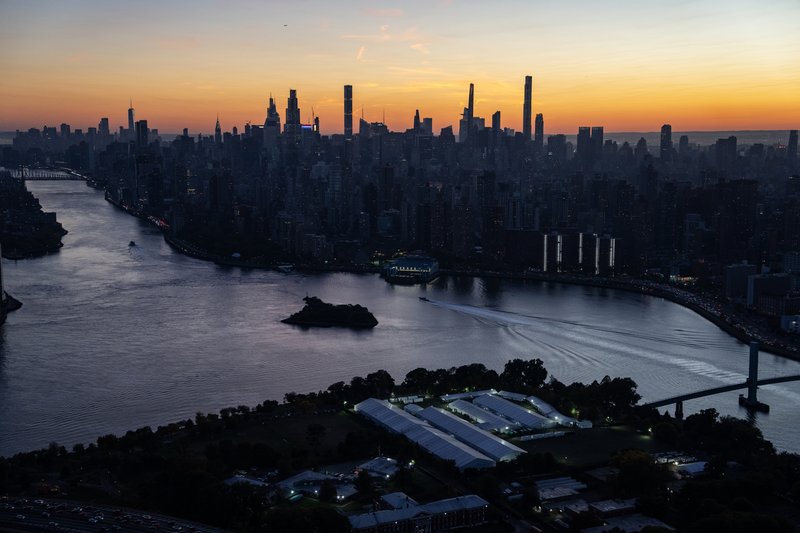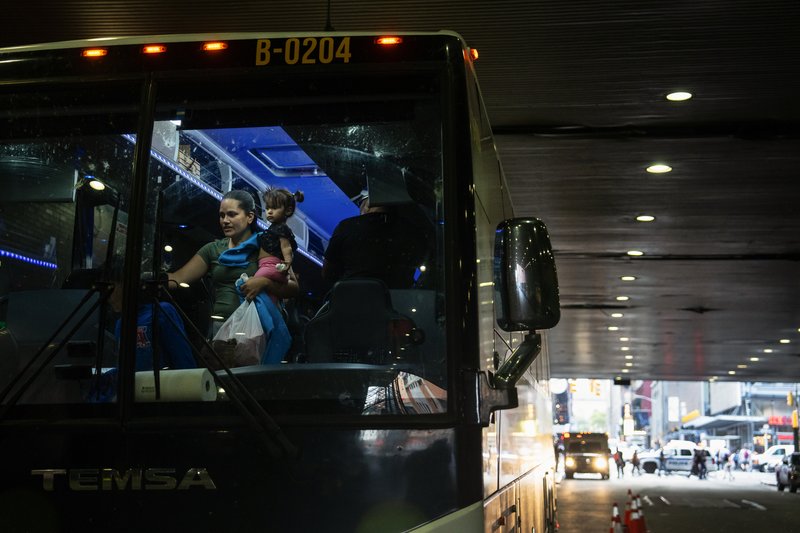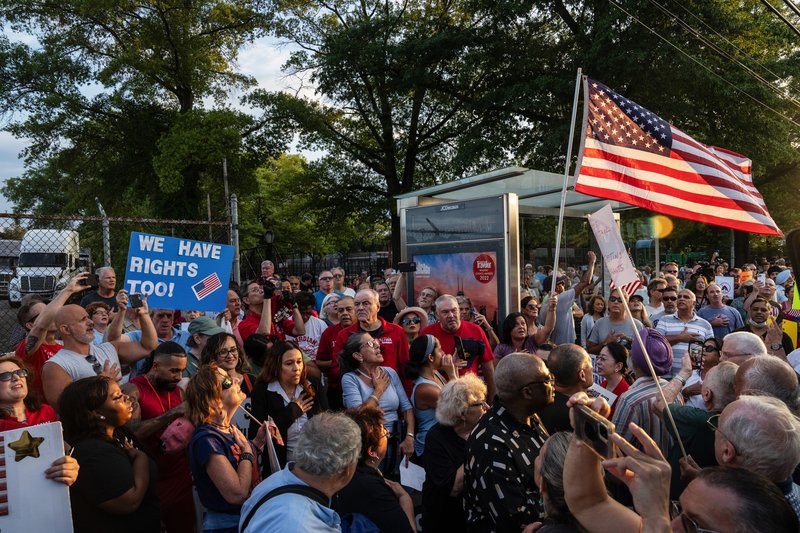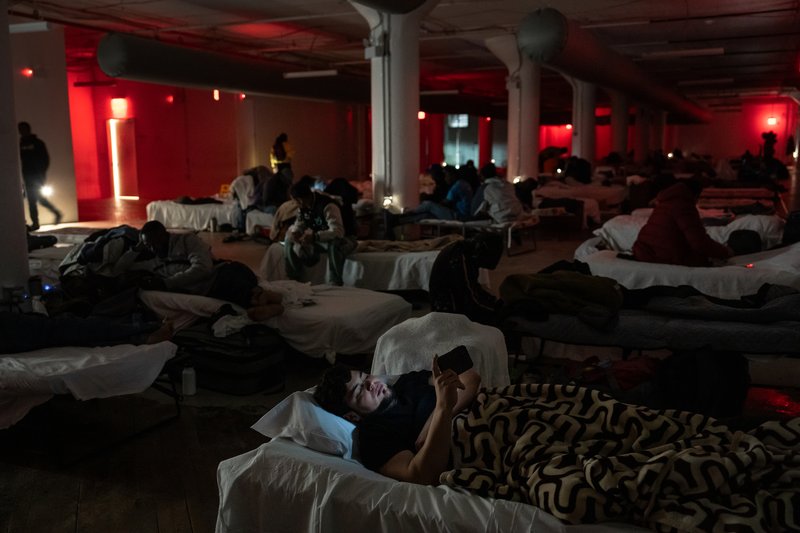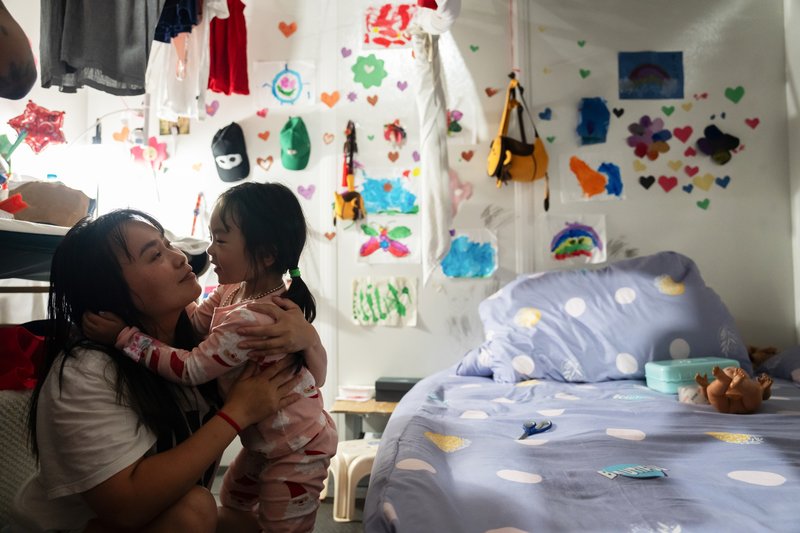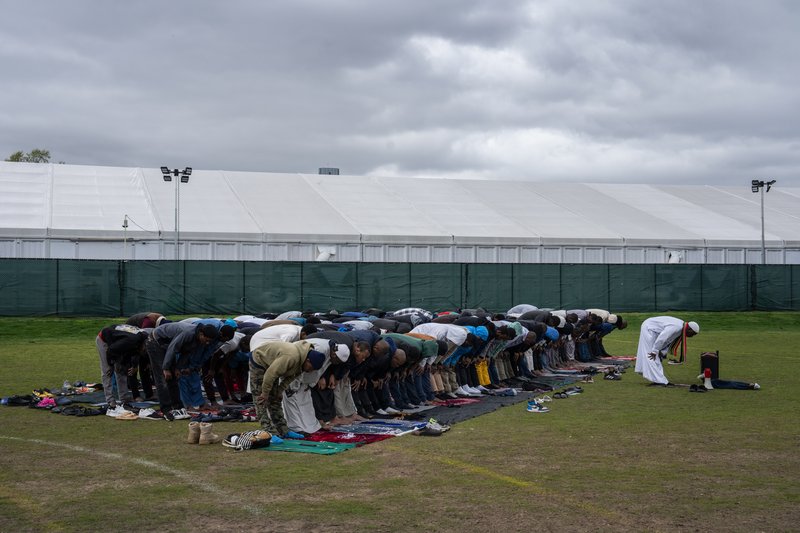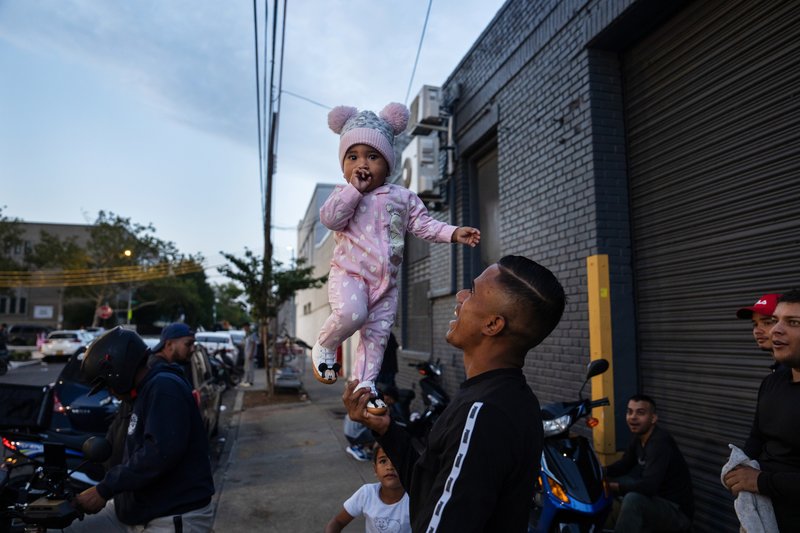First Place: 8 Months Inside New York’s Migrant Shelters: Fear, Joy and Hope
8 Months Inside New York’s Migrant Shelters: Fear, Joy and Hope
Tania Morales, center right, wither daughter, Luna Maradiaga Morales, 2, and husband, Yelsin Maradiaga, wait in the lobby of the Roosevelt Hotel. Originally from Honduras, they arrived in New York that morning. The lobby of the Roosevelt Hotel has been transformed into a processing center for the thousands of asylum seekers that are coming to New York City. While the hotel houses many people, most new arrivals are bussed to various shelters and hotels around the city after processing here. Photographed on Wednesday, Sept. 20, 2023. New York City has spent more than $6 billion over the past two years to shelter people arriving from the U.S.-Mexico border. More than 225,000 migrants have lived in shelters that became a tapestry of cultures. They have blended into the city while living mostly out of sight. But inside the shelters, life has flourished. 150 countries. 110 languages. One shelter system. When the first buses carrying migrants from the southern border arrived in Manhattan two years ago, it seemed little more than a political stunt. If New York truly wanted to be a sanctuary city, then the Republican governor of Texas was happy to oblige by sending busloads of migrants its way. No one could have predicted what would follow. Just over 225,000 migrants have entered New York City since 2022. More than $6 billion has been spent on a hodgepodge of shelters that morphed into the largest system of emergency housing for migrants in the country. Hundreds of hotels and vacant office buildings hit hard by the pandemic found second lives as converted shelters. Ball fields and warehouses were turned into barrack-style dormitories to house migrants from places including Venezuela, Peru, Morocco and Sudan. The changes went beyond the struggle to house people. Politics changed, too. New York became embroiled in the national anger over immigration that helped Donald J. Trump recapture the presidency. The president-elect increased his vote count in a city previously hostile to him, with the influx prompting Mayor Eric Adams, a Democrat, to reconsider one of the city’s bedrock principles: that it must provide a bed to anyone in need of shelter. The number of migrants entering New York, in fact, has been steadily declining for months, leading to the recent closure of some shelters. But the largest city in the country is continuing to house some 55,000 migrants — the size of a small city. The story that began with the arrival of buses from Texas two years ago is still shaping New York, leading to disruption and anger and charity and grace.
Todd Heisler
